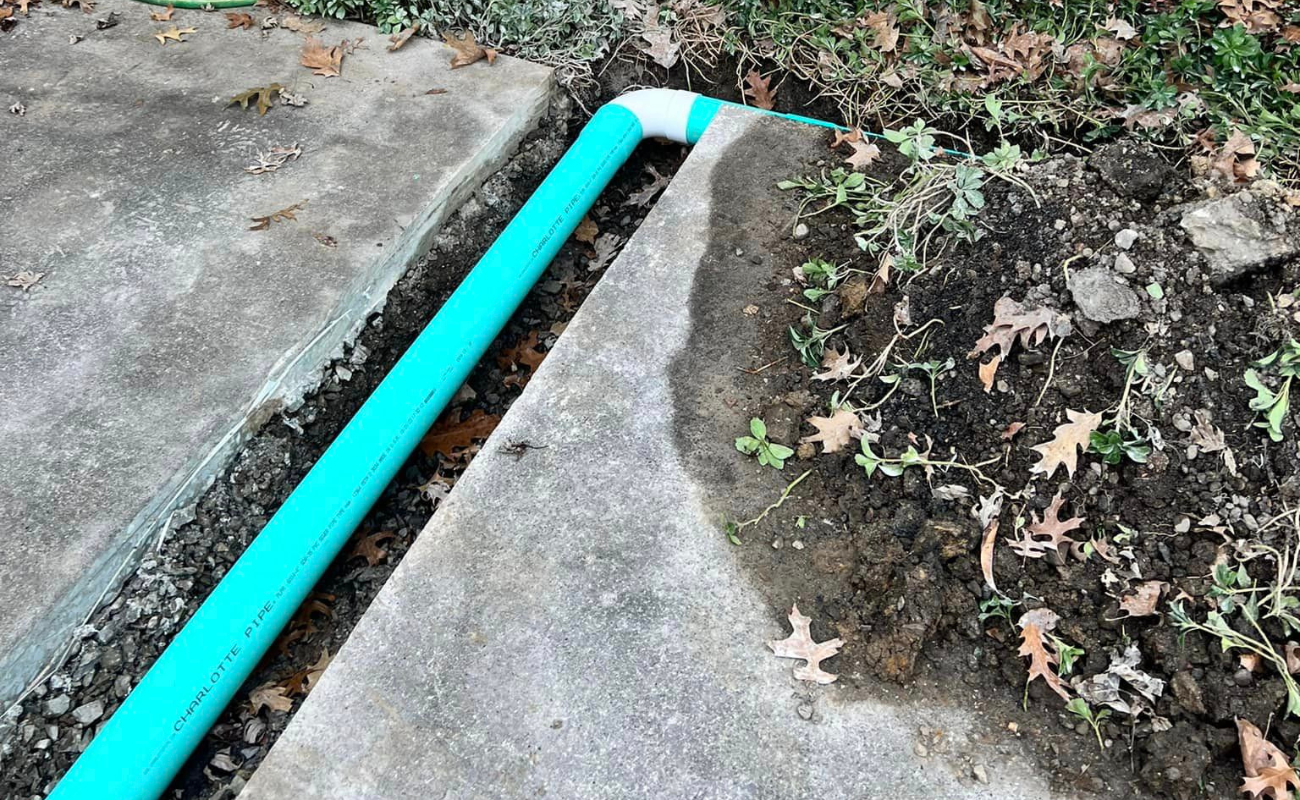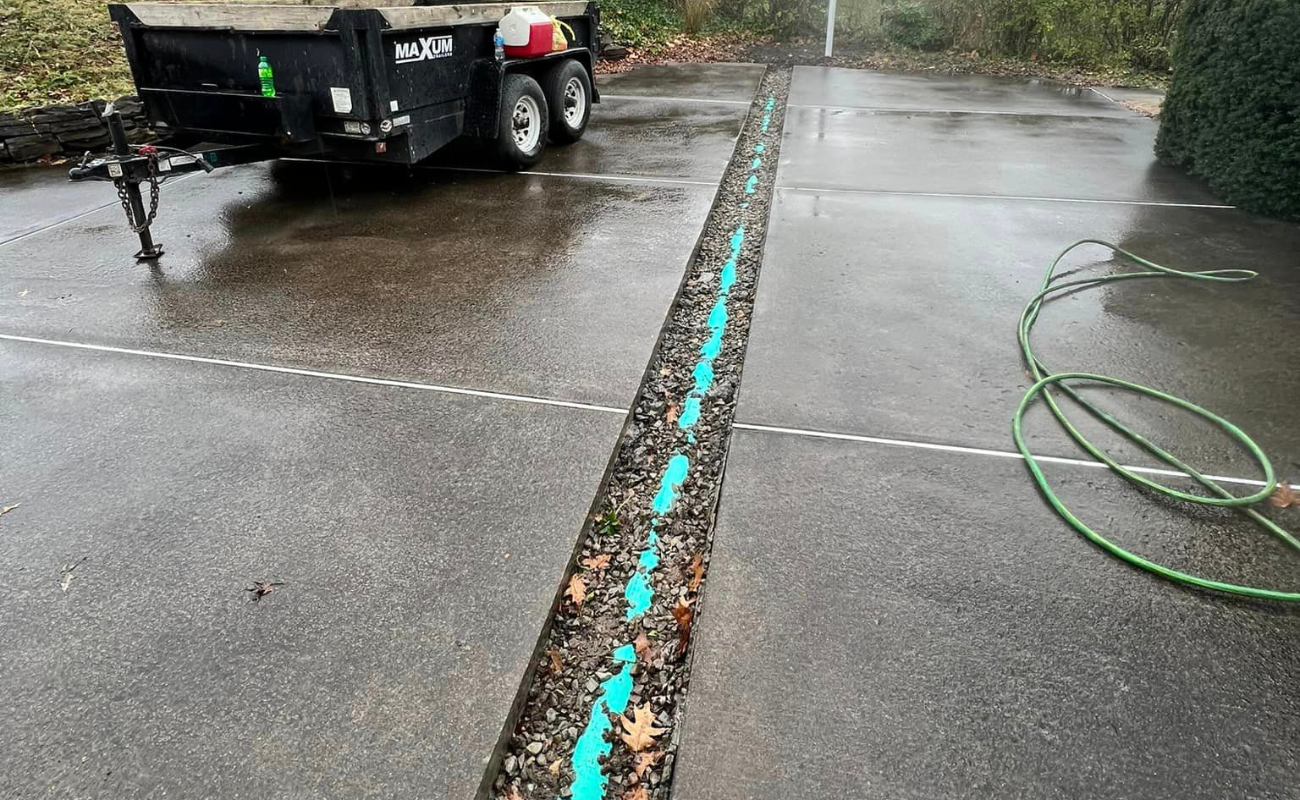
If you’ve ever found yourself pondering the best exterior drainage system for your property, you’re not alone. With various options available, each boasting unique benefits, the decision can be overwhelming. From French drains to sump pumps and everything in between, the key lies in understanding your specific requirements and the characteristics of your surroundings. So, which system will prove to be the ideal solution for your drainage needs? Let’s explore the factors that can guide you toward the most effective choice.
Key Takeaways
- French drains offer versatile water management solutions, ideal for directing water away and preventing erosion.
- Channel drains efficiently collect water over a larger surface area, preventing flooding and water damage.
- Downspout extensions redirect water away from foundations, which is crucial for preventing water-related issues.
- Dry wells are space-efficient and disperse rainwater runoff effectively, making them suitable for limited spaces or aesthetic landscapes.
- Sump pumps are essential for preventing water accumulation, with proper installation being key for functionality.
French Drains
When considering exterior drainage systems, one option that stands out is the French drain. French drains are underground trenches filled with gravel or rock that redirect water away from an area, preventing water damage and flooding. They’re a popular choice due to their effectiveness in managing excess water and preventing erosion.
The key components of a French drain include a perforated pipe surrounded by gravel or rock. The pipe is placed at the bottom of the trench to collect water, while the gravel allows water to flow freely towards the pipe. This design helps in dispersing water evenly and efficiently.
French drains are particularly useful in areas where surface water tends to collect, such as near foundations or in low-lying areas. By directing water away from these vulnerable spots, French drains help protect the structural integrity of buildings and prevent water-related issues.
Proper installation is crucial for the effectiveness of French drains. It’s essential to ensure the correct slope of the trench to promote water flow towards the exit point. Additionally, regular maintenance, such as clearing debris and inspecting the system, is necessary to prevent clogs and ensure optimal performance.
Channel Drains
Another option to consider is channel drains to address water drainage effectively. Channel drains, also known as trench drains, are a popular choice for efficiently managing surface water runoff. Here are three key reasons why channel drains might be the best option for exterior drainage needs:
- Wide Surface Area: Channel drains are designed with a wider surface area than other drainage systems. This broad opening allows them to collect water over a larger area, making them ideal for spaces where water accumulates quickly or in high volumes.
- Versatile Installation: Channel drains can be installed in various locations, such as driveways, patios, and walkways. Their flexibility in placement makes them a versatile solution for different outdoor settings. Additionally, they can be customized to fit specific length requirements, ensuring a tailored fit for your drainage needs.
- Efficient Water Flow: The design of channel drains promotes swift water flow towards the desired outlet. By efficiently capturing and redirecting surface water, these drains help prevent flooding and water damage to your property. Their effectiveness in managing water runoff makes them a reliable choice for maintaining a dry and safe outdoor environment.
Downspout Extensions
Occasionally, downspout extensions play a crucial role in efficiently managing water from your roof’s gutters. These extensions are designed to direct water away from the foundation of your home, preventing potential water damage and flooding issues.
When choosing downspout extensions, consider factors such as material, length, and installation method. Materials like vinyl, aluminum, or flexible plastic offer durability and weather resistance. Ensure the extension is long enough to direct water at least 5-10 feet away from your home to prevent water from pooling near the foundation.
Proper installation is key to the effectiveness of downspout extensions. Securely attach the extension to the downspout using screws or brackets to prevent it from detaching during heavy rainfall or wind. Position the extension at a downward slope away from your home to facilitate water flow.
Regular maintenance is essential to ensure downspout extensions continue to function optimally. Periodically check for clogs caused by debris such as leaves or twigs and clear them to prevent water backup.
Dry Wells
Downspout extensions effectively manage water from your roof’s gutters, directing it away from your home’s foundation.
Dry wells are underground structures designed to collect and disperse rainwater runoff, providing an effective solution for managing excess water around your property. Here are three key benefits of using dry wells for your exterior drainage system:
- Water Dispersal: Once the rainwater enters the dry well through a network of pipes or channels, it’s gradually dispersed into the surrounding soil. This controlled release helps prevent water pooling and reduces the risk of soil erosion.
- Groundwater Recharge: Dry wells promote groundwater recharge by allowing rainwater to infiltrate into the soil and replenish underground aquifers. This sustainable practice helps maintain the water table levels and contributes to overall environmental conservation.
- Space Efficiency: Compared to other drainage solutions, dry wells are space-efficient as they’re installed underground, eliminating the need for above-ground structures. This makes them ideal for properties with limited space or where preserving the aesthetic appeal of the landscape is essential.
Sump Pumps
When considering exterior drainage systems, sump pumps are a crucial component to prevent water accumulation around your property.
Sump pump basics involve a pump that collects water from the sump basin and directs it away from your home’s foundation.
Proper sump pump installation is essential to ensure effective water removal and safeguard your property from potential water damage.
Sump Pump Basics
To effectively manage excess water around your property, understanding the basics of sump pumps is crucial. Sump pumps are essential components of a robust exterior drainage system. Here are three key points to help you grasp the fundamentals of sump pumps:
- Functionality: Sump pumps are designed to prevent flooding by collecting water in a sump pit or basin typically found in basements or crawl spaces. When the water reaches a certain level, the pump activates and redirects the water away from your property.
- Types: There are two main types of sump pumps – pedestal and submersible. Pedestal pumps have the motor positioned above the sump basin, making maintenance easier. Submersible pumps are entirely submerged in the water and are more discreet.
- Maintenance: Regular maintenance is vital to ensure your sump pump functions optimally when needed. Check the pump regularly for debris, test the float switch, and consider a backup power source in case of outages.
Understanding these basics will help you make informed decisions about sump pump installation and maintenance.
Sump Pump Installation
Understanding the functionality and types of sump pumps sets the foundation for successful sump pump installation. When installing a sump pump, begin by selecting the appropriate type based on your specific needs.
Submersible sump pumps are ideal for basements with limited space, while pedestal sump pumps are suitable for areas with a higher water table.
To install a sump pump, start by excavating a pit at the lowest point in the basement or crawl space. Ensure the pit is deep enough to accommodate the pump and allow space for water collection.
Next, place the sump pump in the pit, making sure it’s level. Connect the discharge pipe to the pump and route it away from the foundation to prevent water from seeping back into the basement.

Catch Basins
Considering the efficiency of exterior drainage systems, catch basins play a crucial role in managing excess water around your property. These underground structures are designed to collect water runoff and prevent it from pooling on your property, helping to protect your home’s foundation and landscaping.
Catch Basins: Key Features
- Collection Point: Catch basins serve as collection points for water runoff, capturing debris and preventing it from clogging the drainage system.
- Gravel Bed: Beneath the catch basin, a gravel bed provides additional filtration and aids in the percolation of water into the ground.
- Outlet Pipe: Connected to the catch basin, an outlet pipe carries the collected water away from your property, ensuring proper drainage and preventing water-related issues.
By strategically placing catch basins in low-lying areas or where water tends to accumulate, you can effectively manage excess water and prevent flooding.
Regular maintenance, such as removing debris from the basin and inspecting the outlet pipe for clogs, is essential to ensure the system functions optimally.
Grading and Sloping
For effective management of excess water around your property, the grading and sloping of your land play a critical role. Grading refers to shaping the land to direct water flow while sloping involves creating a gentle incline to guide water away from structures. Proper grading ensures that water flows away from your home’s foundation, preventing issues such as flooding and water damage.
To achieve effective grading and sloping, it’s essential to consider the topography of your land. Ideally, the ground should slope away from your home at a minimum grade of 2%, which means a 2-foot drop for every 100 feet of distance. This slope encourages water to flow away naturally, reducing the risk of water pooling near your property.
During the grading process, attention to detail is crucial. High spots should be leveled, and low areas should be filled to create a smooth, uniform slope. It’s important to avoid creating any depressions where water can collect, as this can lead to potential drainage issues.
Curtain Drains
When considering drainage systems, curtain drains play a crucial role in managing water flow.
The drainage depth of curtain drains varies based on the specific needs of your property, ensuring efficient water removal.
The installation process involves excavating a trench, laying the drain pipe, and backfilling with gravel to facilitate proper water drainage.
Drainage Depth
To determine the optimal drainage depth for curtain drains, it’s crucial to consider the specific characteristics of your property and the surrounding soil conditions. The drainage depth plays a significant role in ensuring effective water removal and preventing issues such as flooding and soil erosion.
Here are some key factors to consider when determining the drainage depth for your curtain drains:
- Property Slope: The slope of your property will impact the speed at which water flows and accumulates. Steeper slopes may require deeper drainage to handle the increased water flow.
- Soil Permeability: Understanding the permeability of your soil is essential in determining how deep your curtain drains should be. Highly permeable soils may require shallower drains, while less permeable soils may necessitate deeper installation.
- Water Table Depth: The depth of the water table in your area will influence how far down your curtain drains need to be placed to effectively divert water. Consider the seasonal variations in the water table when determining the optimal drainage depth.
Installation Process
Considering the factors that influence the optimal depth of curtain drains, it’s imperative to now focus on the practical aspect of their installation process.
To begin, mark the trench path where the curtain drain will be placed. Ensure that the trench is sloped away from the problematic area, allowing water to flow freely. Excavate the trench to the required depth, typically between 24-36 inches, depending on soil composition and water volume.
Next, line the trench with geotextile fabric to prevent soil intrusion and clogging. Place the drain pipe at the bottom of the trench, ensuring a slight slope towards the desired drainage outlet. Cover the pipe with gravel to promote water filtration and prevent pipe damage.
Each instrument plays a crucial role in orchestrating water flow on your property in the symphony of exterior drainage systems. From the deep, resonant tones of French drains to the swift, efficient melody of channel drains, each option brings unique harmony to the performance. Choose the drainage system that best suits your needs, and let the soothing rhythm of water management wash away your worries.
